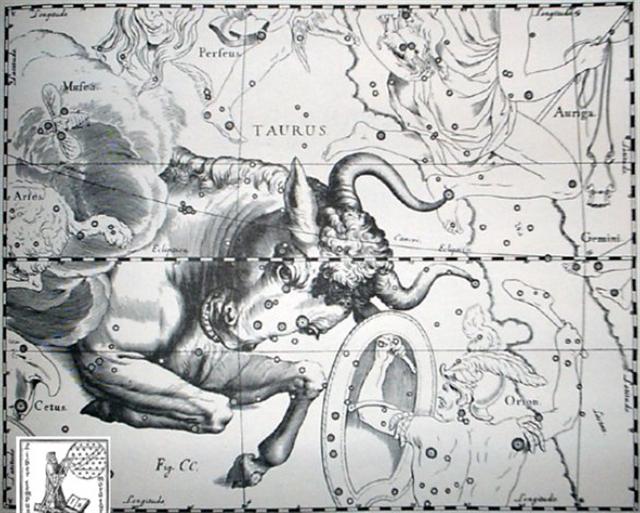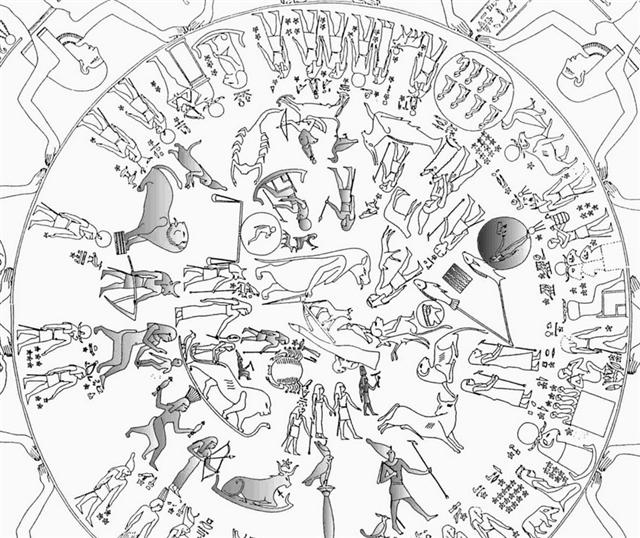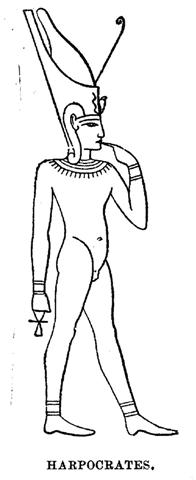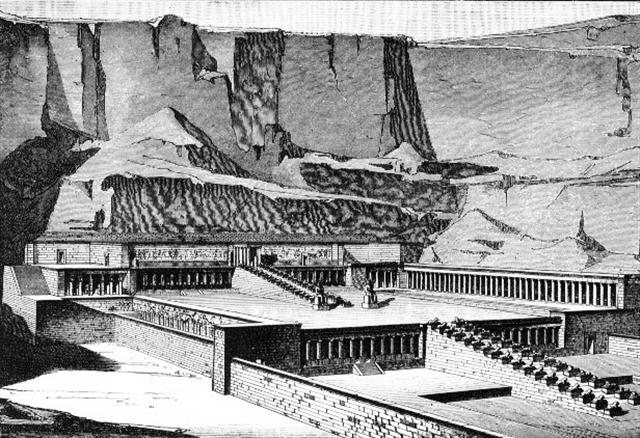Once again. Aries could have been inserted where the Bull ended:  ... We have already ... attempted to explain the striking phenomenon that the Bull and Pegasus, both with half-bodies only, ήμίτομοι, enclose the Ram between them, by the assumption that the latter was interposed later, when the sun at the time of the vernal equinox was in the hind parts of the Bull, so that this point was no longer sufficiently marked in the sky. Another matter susceptible of a like explanation may be noted in the region of the sky opposite to the Ram and the Bull. Although we cannot doubt the existence of an eastern balance, still ... the Greeks have often called it χηλα`ι 'claws' (of the Scorpion), and according to what has been said above ... the sign for a constellation in the neighbourhood of our Libra reads in the Arsacid inscription 'claw(s)' of the Scorpion. These facts are very simply explained on the supposition that the Scorpion originally extended into the region of the Balance, and that originally α and β Librĉ represented the 'horns' of the Scorpion, but later on, when the autumnal equinox coincided with them, the term Balance was applied to them ... Around 1800 B.C., according to the illustration above (i.e. around 400 years after the Pleiades at 0h) the Sun moved into rain clouds:  The precession pushed the Sun backwards along his ecliptic path and his fate was evidently to go down to the Fishes (implying death). His destiny was to move into Water, a certain death for the Great Fire in the daytime sky: ... This [σ] has been identified with Nunki of the Euphratean Tablet of the Thirty Stars, the Star of the Proclamation of the Sea, this Sea being the quarter occupied by Aquarius, Capricornus, Delphinus, Pisces, and Pisces Australis. It is the same space in the sky that Aratos designated as Water ... To insert Aries was only a temporary solution and before Alrisha (the Knot, α Pisces) was reached something more radical had to be done. The solution, I imagine, could have been to let the Horus child be transferred across the year to Libra, where his reflection would be seen at Full Moon.
With further precessional advances in the future he would then be safe, because his reflection would move towards Virgo and Leo. ... And then the face of the earth was dried out by the sun. The sun was like a person when he revealed himself. His face was hot, so he dried out the face of the earth. Before the sun came up it was soggy, and the face of the earth was muddy before the sun came up. And when the sun had risen just a short distance he was like a person, and his heat was unbearable. Since he revealed himself only when he was born, it is only his reflection that now remains. As they put it in the ancient text, 'The visible sun is not the real one ... '
In the Dendera ceiling we can see the Horus child, pointing to his mouth and resting on the beam of Libra. But we can also see him below Alrisha - his true heliacal position had to be removed from the ecliptic field. His Greek name was Harpocrates:
The left (female) horn of the Bull was in contact with the outstretched foreleg of the Ewe. But the left horn of the Bull was rather oriented ahead towards ζ (the Heavenly Gate) and the Crab Nebula (M1).
I am suggesting the Hat-Hor (the House for Horus) temple at Dendera was built in order to make clear for everyone what the time was:
"Sylvie Cauville of the Centre for Computer-aided Egyptological Research at Utrecht University and Éric Aubourg dated it to 50 BC through an examination of the configuration it shows of the five planets known to the Egyptians, a configuration that occurs once every thousand years, and the identification of two eclipses. The solar eclipse indicates the date of March 7, 51 BC: it is represented by a circle containing the goddess Isis holding a baboon (the god Thoth) by the tail. The lunar eclipse indicates the date of September 25, 52 BC: it is represented by an Eye of Horus locked into a circle." (Wikipedia)
... it is not too much to assume that the Egyptians observed, and taught people to observe, the sun on the horizon. This being so, the chances are that at first they would observe the stars on the horizon too, both stars rising and stars setting; this indeed is rendered more probable by the very careful way in which early astronomers defined the various conditions under which a star can rise or set, always, be it remembered, in relation to the sun ... (Lockyer) ... Although the Egyptians knew nothing about telescopes, it would seem that they had the same problem before them which we solve by a special arrangement in the modern telescope - they wanted to keep the light pure, and to lead it into their sanctuary as we lead it to the eyepiece. To keep the light that passes into the eyepiece of a modern telescope pure, we have between the object-glass and the eyepiece a series of what are called diaphragms; that is, a series of rings right along the tube, the inner diameter of the rings being greatest close to the object-glass, and smallest close to the eyepiece; these diaphragms must so be made that all the light from the object-glass shall fall upon the eyepiece, without loss or reflection by the tube. These apertures in the pylons and separating walls of Egyptian temples exactly represent the diaphragms in the modern telescope ... (Lockyer)
|







